Related Tags
“There’s no need to use virgin material, I’m always on the lookout in skips”: Brute Bass’ David Telfer on his radical, upcycled instruments
The Sunspel creative director discusses handcrafting his unique instruments and pushing aesthetic boundaries with high quality materials.
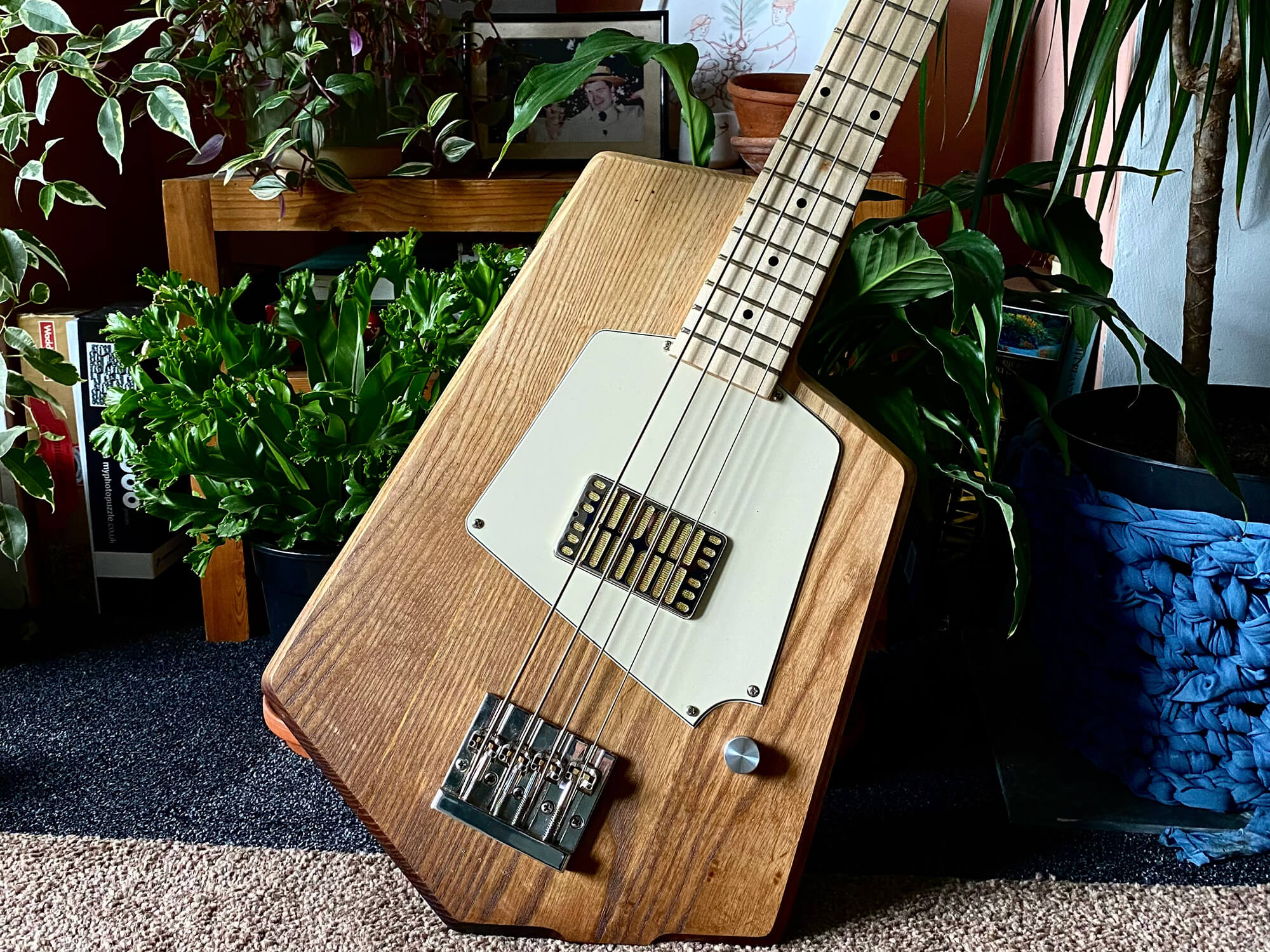
Why did you decide to start building your own basses and guitars?
“I have always enjoyed making things with my hands and owning something unique. With basses it started with me stripping and painting my Fenders in custom nitro colours. Although this made them unique, I wanted more… so decided to try and make my own. I developed through learning off the internet, short courses and from making mistakes both in craft and design. I love playing them and testing what I personally like, from the neck shape and pickup placement to the wood pairings, which then informs the next bass that I develop.”
You work as the creative director of clothing brand Sunspel. Does that influence your luthiery, and if so, how?
“As my training was in fashion, I am much more of a realist in that industry as I am more aware of the possibilities and limitations with clothing. With luthiery, I am much newer to this as a design challenge and therefore feel a lot more freedom to experiment, push aesthetics and less pressure to conform.
“One of the key similarities with Sunspel and my work at Brute is using good materials and where possible materials that are as locally sourced. I do feel the material you put into a guitar or piece of clothing indicates the quality of the resulting product. I find that’s the same case with pickups, and tend to try and use London-based Mojo Pickups for most of my builds due to the variety, locality and quality.”
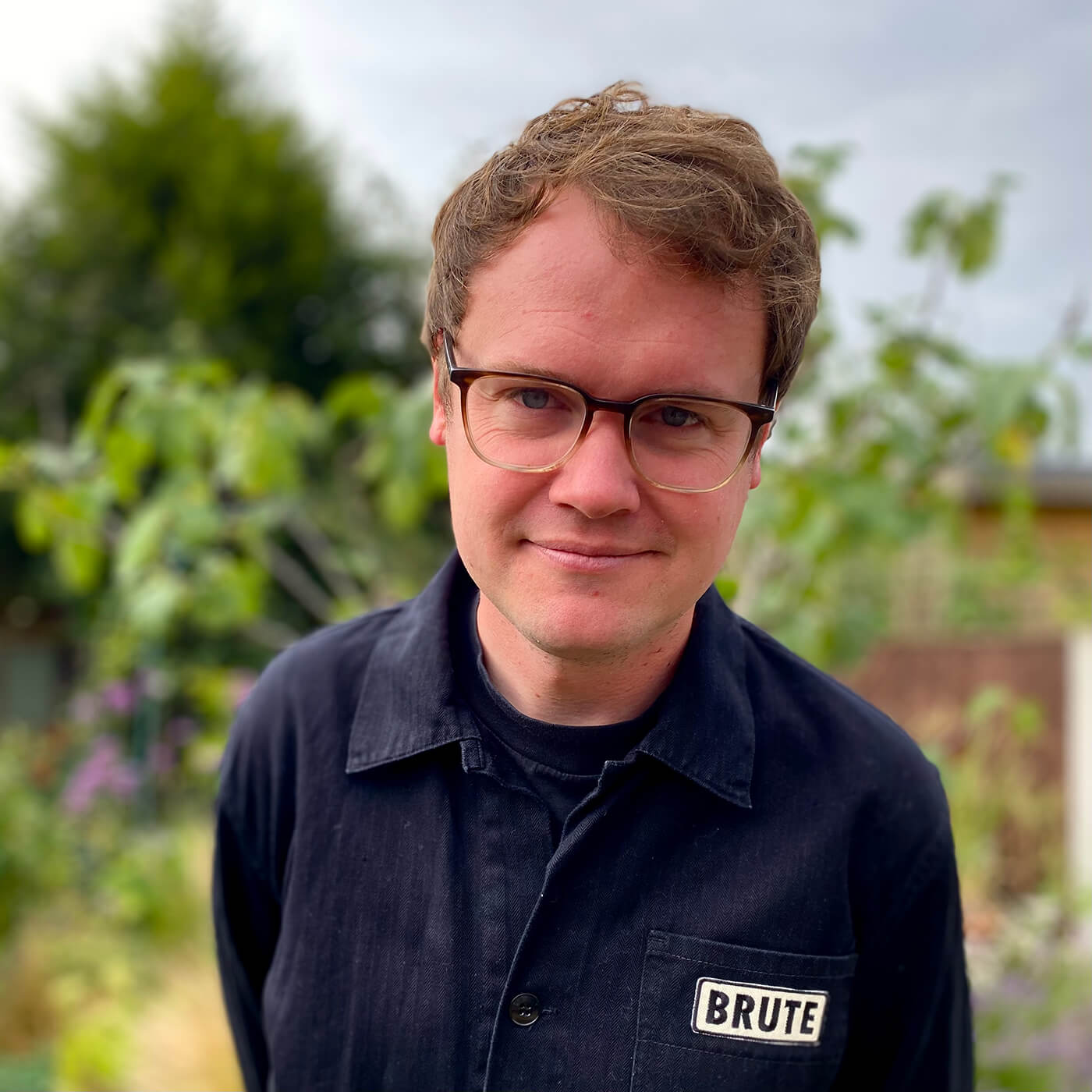
Your instruments are inspired by mid-century design and more esoteric models by the likes of Fenton Weil and Yamaha. What draws you to this era and these designs in particular?
“I think the 60’s was such an innovative era of guitar design. Although the classics had been invented there was not yet a standard bass or guitar shape that everyone played and the room for diversity and innovation was much more accepted than it probably is today. I think people now have fixed shapes in their mind as to what is acceptable for guitar/bass designs and anything else is questionable.
“I do find it is a bit of a shame for a creative industry such as music that around 90% of guitars are Fender or Gibson. I try and make sure I understand what is great about those classic designs and boil down why they work, from the scale length, the woods used and the pickup position and then rework them in my own style.
“Most of my designs usually start by reworking a vintage design, either exaggerating or shifting the proportions to make it feel modern, but I do think it’s important to be inspired by techniques and aesthetics from other creative industries, such as furniture or art, to give a new feel to the instruments.”
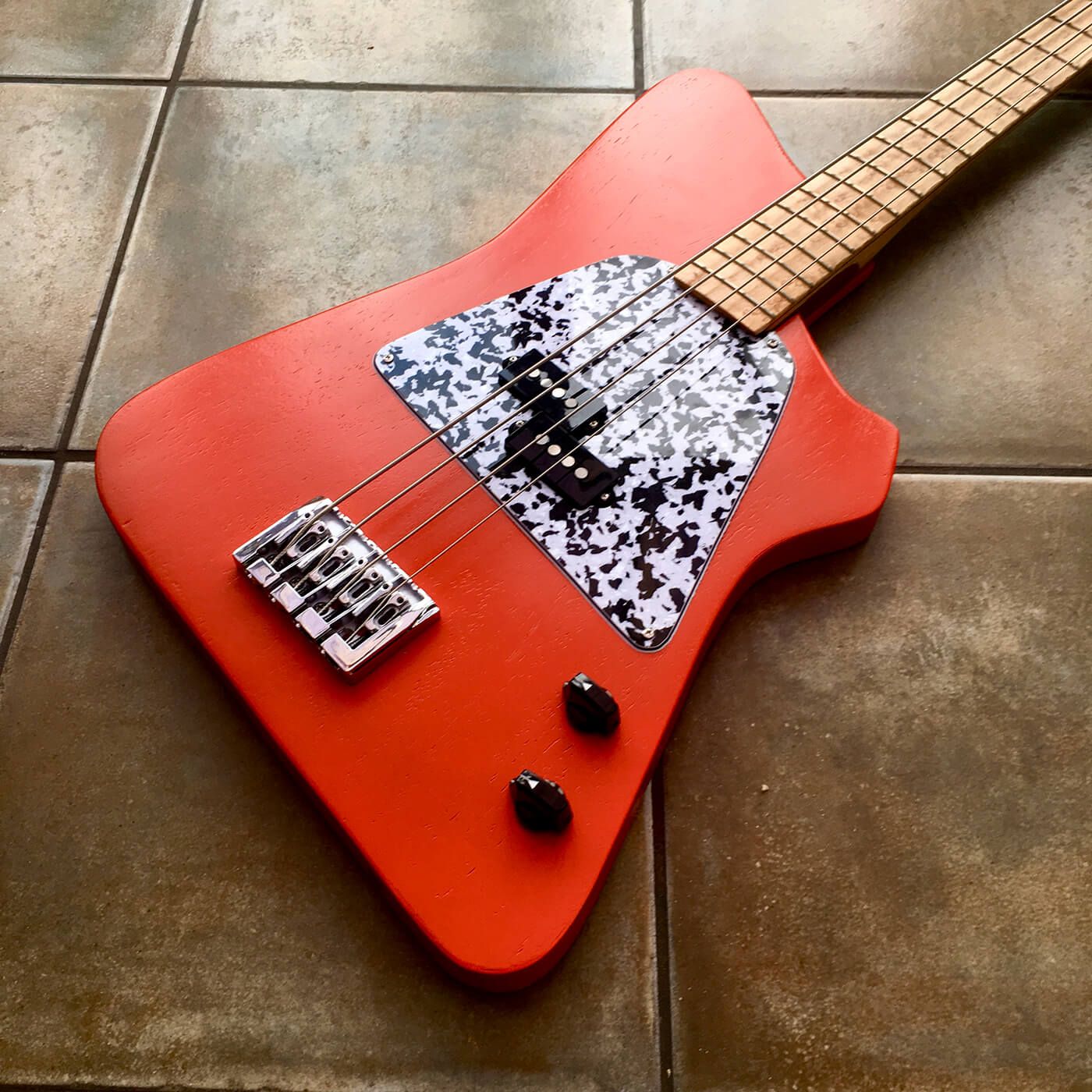
Did you have any external investment starting out?
“I am a very small scale operation and it’s all made to order, so I guess my day job and up front payments fund this for now.”
When did you feel like you’d nailed your branding?
“To be honest, its still a work in progress, I feel like when you are small scale people try and get too fixed on a logo or branding to look professional, whereas I feel the benefit of being small and custom made is that you can change it and show that it is handmade.
“A handwritten note in the neck pocket or on the back of the headstock is a much nicer touch than spending loads on a branding iron which is quite a permanent investment. In general I do like bold branding and simple typography so have quite a few different logos in rotation in use.”

The interest in Brute Bass Guitars has sky-rocketed very quickly, with bands like Metronomy now using them. How has that impacted the brand?
“There’s a lot of positives and negatives about Instagram, but one of the really enjoyable parts for me is the community you can build. If I notice a bass player that I like starts following me, I usually try to get in touch with them and see if they have interest in a bass, on loan or as a custom. Without starting Brute I would never have been able to do this so it has been amazing to be able to link my hobby with meeting some of my heroes. Having them say positive comments about my work in return is incredibly humbling.”
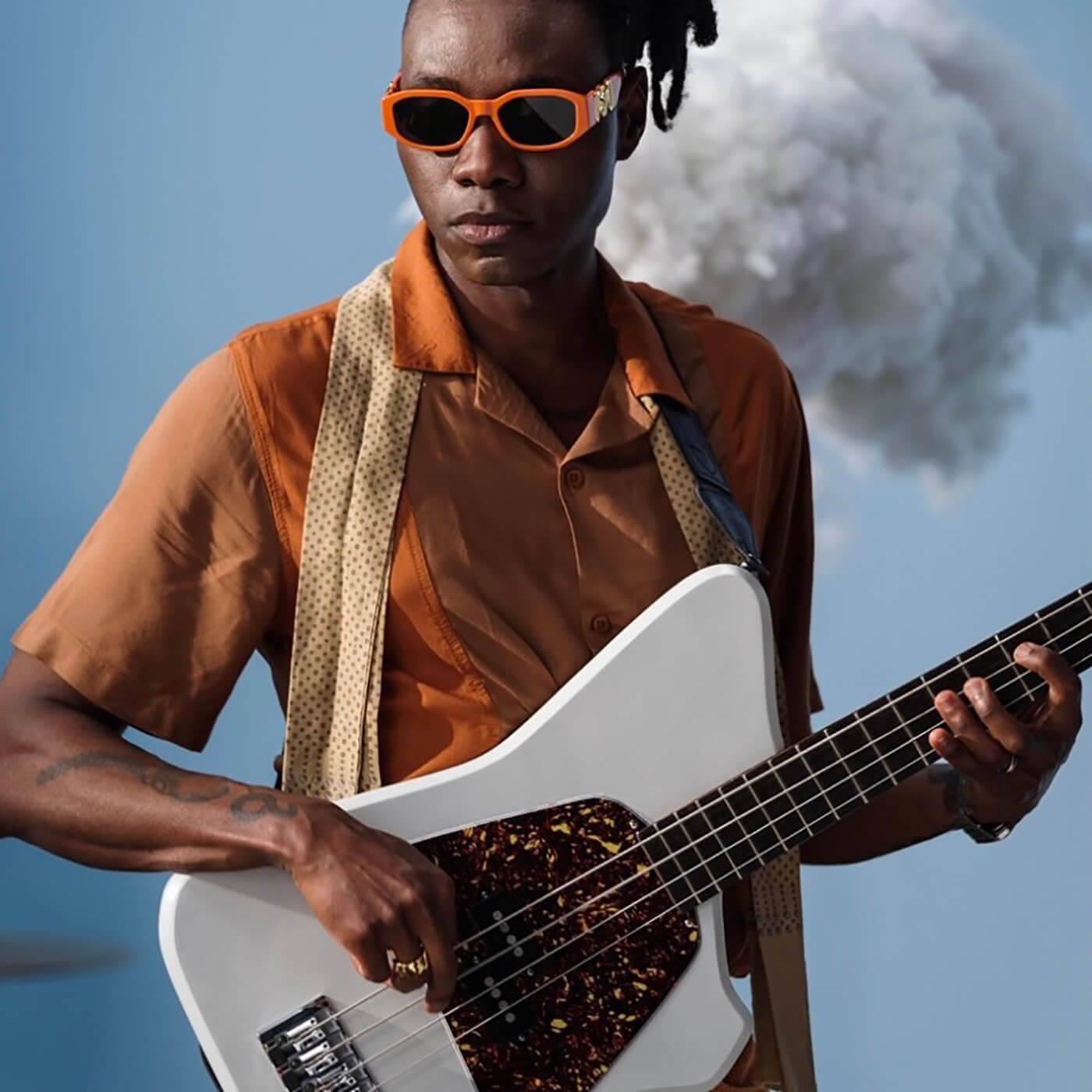
There’s a plethora of custom options available from you too, notably aluminium necks and recycled materials. What drives you to include such a variety of finish options?
“If I was really doing this as a business obviously limiting shapes and materials would be more efficient, but my personal enjoyment is trying to create something new or to reinvent something old and then see what the reaction is. As each bass is hand made the more you can offer a custom service the better. I enjoy trying to create unique shapes for customers, that are in line with my aesthetic which gives them something truly ‘one off’. In a way it’s the repetition that I find hard as it doesn’t excite me in the same way as developing a new shape.
“Going forward there’s already enough material in the world and reusing or up-cycling is really a big interest to me. I’ve made many basses out of damaged Ash shelves or recycled plexiglass. As long as the material has the properties you want there really is no need to use virgin material, so I am always on the lookout in skips for anything that has been thrown away that could make the next bass — the glam life of a luthier!”
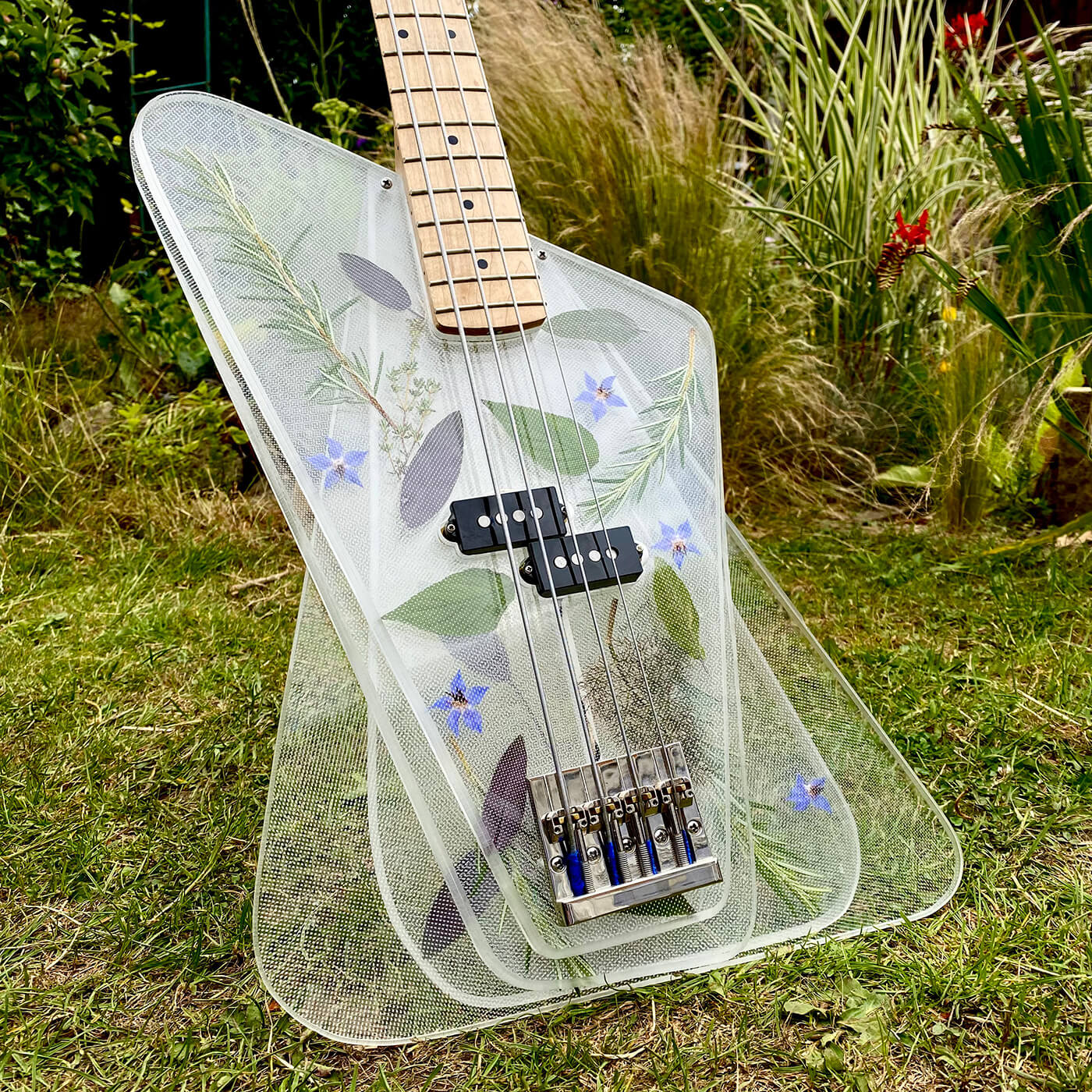
You’ve mentioned previously that this is a passion project. Do you have any enthusiasm for developing Brute Bass Guitars as a fully-fledged operation in the future?
“At the moment I’m enjoying the combination of my work with Sunspel as a day job and Brute as a side project. I have a young family and this feels like a good balance for now. However, I will always be making basses and look forward to finding new shapes that excite me and others, and am excited by who I may meet along the way; hopefully seeing more Brute Bass Guitars in the wild.”
Follow @brute_bass_guitars on Instagram for more information.
